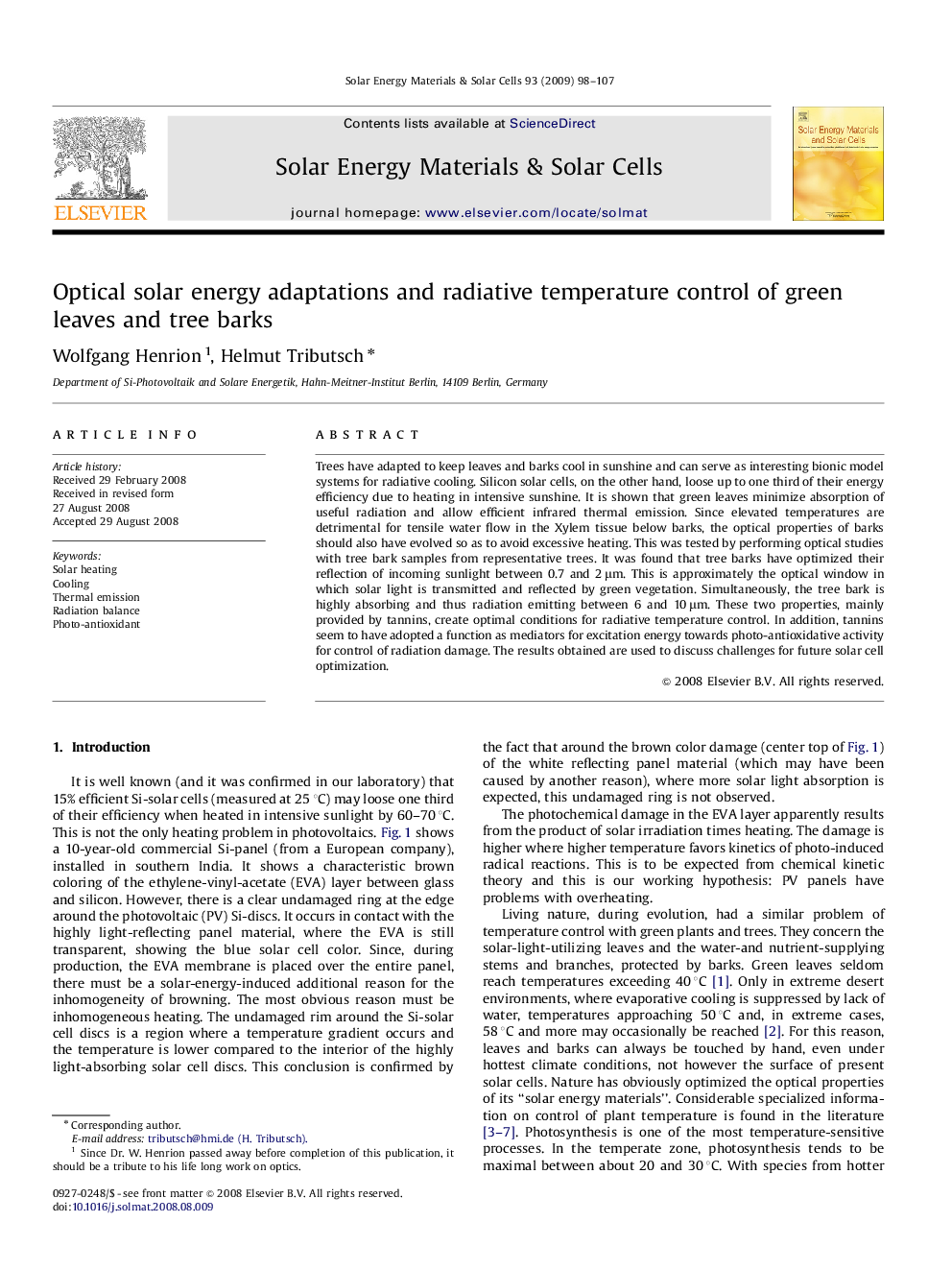| کد مقاله | کد نشریه | سال انتشار | مقاله انگلیسی | نسخه تمام متن |
|---|---|---|---|---|
| 80672 | 49394 | 2009 | 10 صفحه PDF | دانلود رایگان |

Trees have adapted to keep leaves and barks cool in sunshine and can serve as interesting bionic model systems for radiative cooling. Silicon solar cells, on the other hand, loose up to one third of their energy efficiency due to heating in intensive sunshine. It is shown that green leaves minimize absorption of useful radiation and allow efficient infrared thermal emission. Since elevated temperatures are detrimental for tensile water flow in the Xylem tissue below barks, the optical properties of barks should also have evolved so as to avoid excessive heating. This was tested by performing optical studies with tree bark samples from representative trees. It was found that tree barks have optimized their reflection of incoming sunlight between 0.7 and 2 μm. This is approximately the optical window in which solar light is transmitted and reflected by green vegetation. Simultaneously, the tree bark is highly absorbing and thus radiation emitting between 6 and 10 μm. These two properties, mainly provided by tannins, create optimal conditions for radiative temperature control. In addition, tannins seem to have adopted a function as mediators for excitation energy towards photo-antioxidative activity for control of radiation damage. The results obtained are used to discuss challenges for future solar cell optimization.
Journal: Solar Energy Materials and Solar Cells - Volume 93, Issue 1, January 2009, Pages 98–107